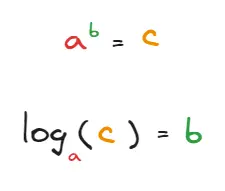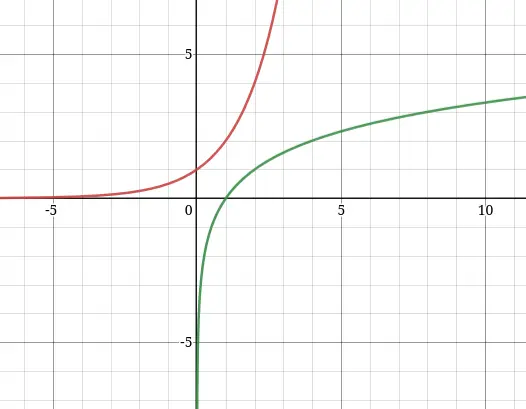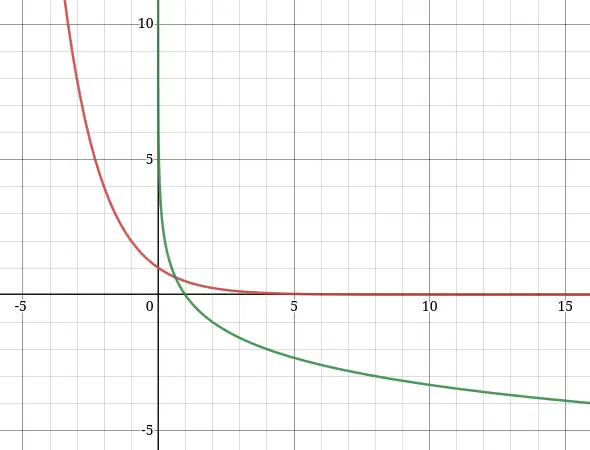Logarithm
A logarithm is equal to an exponent
 Logarithms are the function that gets you the power from given a base and a result
Logarithms are the function that gets you the power from given a base and a result
 Base:
Argument:
Exponential:
Base:
Argument:
Exponential:
Log Properties
only valid if b is positive
Logs ARGUMENT never be negative
Because, base^2 can NEVER be negative A log is an exponent. remember
Log Bases never be negative
A log is an equation(sorta). Its saying that the argument^exponential can equal to the argument. You provide it the base and argument, it returns the exponential.
The problem is when you give it a argument that the base can never equal. eg: ^ This will never be true. Unless you use Imaginary Number
Log Base can NEVER BE One
Because, 1^anything = 1. Which is saying you will have infinite y-values for one x value. You cant return anything
Inverse Exponentials
If you graph out a logarithm function of any base, like then, it will look like a inverse Exponential Functions graph
Inverse of Growth

Inverse of Decay

Natural Logarithms
ln is that function which can help you with logarithms of different bases. it uses eulers number as the base. Golden ratio shenanigans
Theorems
Change of Base Theorem
Power Law
Product Law of Logarithms
Quotient Law of Logarithms
Graphing Logarithms
Famous 5(Depends on Base)
| x | y |
|---|---|
| base^-2 | -2 |
| base^-1 | -1 |
| base^0 | 0 |
| base^1 | 1 |
| base^2 | 2 |
Example With Transformation
Graph y = log(x-2)-5
- Get the mapping rule (x+2,y-5)
- Get the V.A. in this case it is x = 2
- use Graphing Logarithms famous five
| x | y |
|---|---|
| 10^-2 | -2 |
| 10^-1 | -1 |
| 10^0 | 0 |
| 10^1 | 1 |
| 10^2 | 2 |
| with mapping rule (x+2,y-5) |
| x+2 | y-5 |
|---|---|
| 2.01 | -7 |
| 2.1 | -6 |
| 3 | -5 |
| 12 | -4 |
| 102 | -3 |
| You can use decimals. Dont do shit like 10^-2+2, make them decimal |
- Y intercept? X intercept?
- Domain? Range?(usually Y∈ℝ)